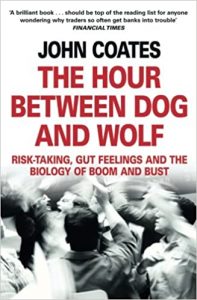I very much enjoyed reading Robert Sugden’s The Community of Advantage: A Behavioural Economist’s Defence of the Market. It tackles the aspect of behavioural economics that has always troubled me: the presumption that there’s a wise policy-maker who somehow knows better than I do what’s good for me and will act like a government version of Mad Men to non-coercively get me to choose accordingly. In other words, libertarian paternalism is a contradiction in terms, and in reality. In fact, I’m torn because – like many other “experts” – I do think economists (or doctors, or engineers, or farmers, or nuclear physicists etc) often do know better than most of us what makes for a better outcome. Even in less expert domains, such as the provision of news, it is surely better not to give people exactly what they want, if that’s bias-confirming news rather than impartial and accurate news.
However, Lord Reith and other paternalists didn’t pretend to be ensuring people got what they *really* want, rather than what’s good for them according to the paternalist. As Sugden points out early in this excellent book, most behavioural economics implicitly assumes it’s possible to discern a set of ‘true’ but latent individual preferences, undistorted by the various psychological mechanisms identified in the literature. It addresses policy prescriptions to a benevolent social planner, the policy maker – in other words it takes what’s referred to as “the view from nowhere”, an impartial spectator outside society. This enables a normative assessment of behavioural policies. It’s an appealing idea in many ways, and an admirable effort to take this impartial perspective. But it is of course open to the standard public choice critique and has led (as I argued in my Tanner Lectures some years ago) to bad economic policy choices. Sugden also criticises Sen’s alternative of finding impartiality in the ability of a proposition to withstand reasoned public debate; “I cannot see why I am morally required to justify my private choices by reasoned arguments and to expose those arguments to public scrutiny,” he writes.
Sugden advocates instead a contractarian approach, so rather than asking is aggregate welfare maximized, the question is: “is it in the interest of each individual to accept the rules of that institution, on the condition that everyone else does the same”. The behavioural challenge is devising economic institutions satisfying this condition with respect to individuals who do not know what their preferences are. To translate this into a normative criterion useful for policy, Sugden proposes that: “It is in each individual’s interest to have more opportunity rather than less.” In other words, there is an an analogue to the invisible hand theorem: “The guiding idea is that a well-ordered economy is an institutional framework that allows individuals to co-operate with one another in the pursuit of what they perceive as their common interests.” He traces the approach to Hume’s view of good institutions in a well-ordered society as self-reproducing and self-enforcing conventions – self-enforcing because of mutual advantage, albeit emerging in an evolutionary way in society. Moral reasoning is addressed to individuals rather than a nebulous ‘policymaker’ outside of society.
A couple of technical chapters demonstrate that the contractarian approach is a generalisation of the usual welfare theorems in an exchange economy. The book then turns to policy questions: what kind of regulation can be justified in normative terms if the criterion is expanding individual opportunity (rather than satisfying their ‘true’ latent preferences)? For example, what about someone choosing how much to save for their retirement, a well-known behavioural policy example. Sugden suggests: “Behavioural economists’ propensity to interpret context-dependent preferences [like the opt-out/in pattern] as evidence of self-control problems may be a side-effect of their commitment to the model of the inner rational agent.” He argues that the policy drive to increase personal retirement savings is driven by policy regimes in which pensions are privately provided – so the behavioural policy is there to serve the regime rather than the individual. “A contractarian solution to this problem may require some form of compulsory saving.” In short, the nudge is a fig leaf and the better policy (increasing individuals’ opportunity sets) would be a straightforward regulated contribution.
The term ‘community of advantage’ comes from Mill. Sugden is making an ardent liberal case, while recognising the realities of human psychology. I remain somewhat torn. To go back to Lord Reith, British TV viewers, when asked, are very clear that they prefer watching sport, comedy, movies and soap operas, but they also definitely want their licence fee to support the provision of impartial news, children’s programmes, educational material and other wholemeal stuff. Those preferences are not latent, but rather acknowledge explicitly the mutual as well as the individual benefit. However, Sugden’s approach is very attractive & I’d say The Community of Advantage is a must-read for those interested in behavioural and welfare economics.
[amazon_link asins=’0198825145′ template=’ProductAd’ store=’enlighteconom-21′ marketplace=’UK’ link_id=’f65093b0-9c81-11e8-9f97-4164bffc4a2c’]

